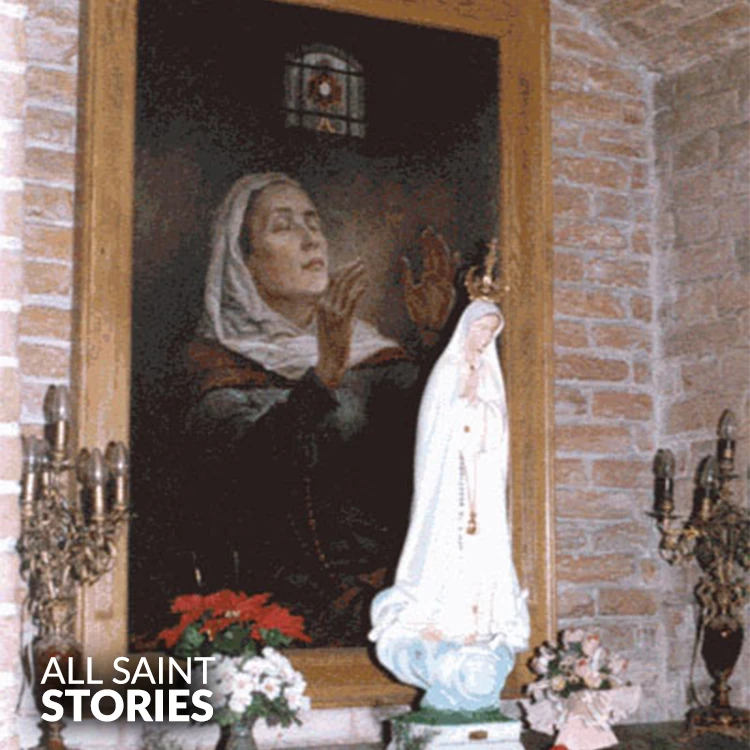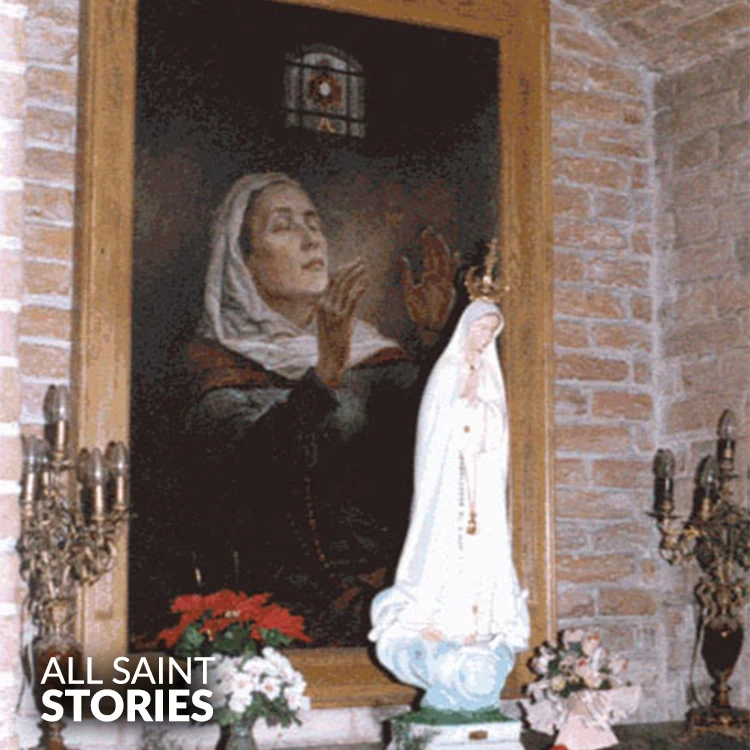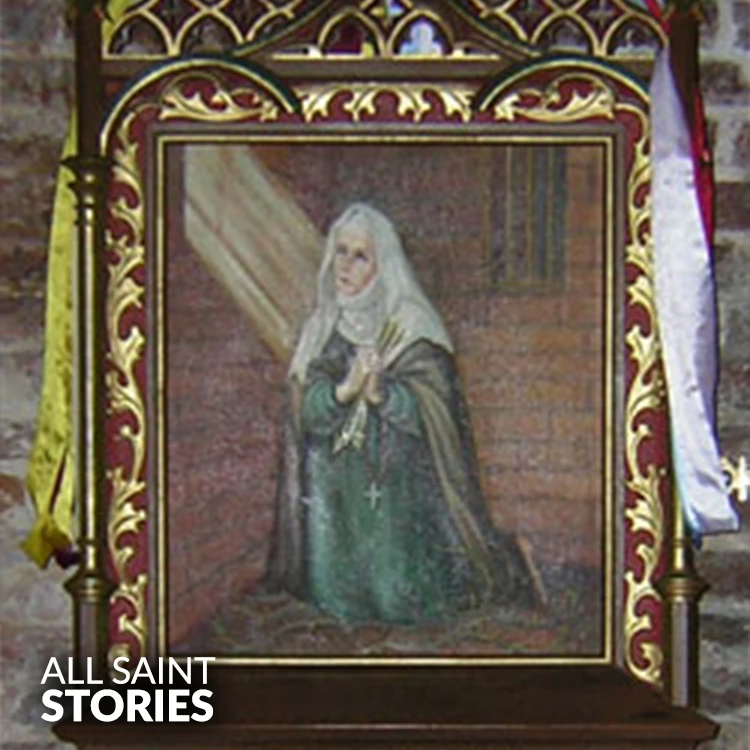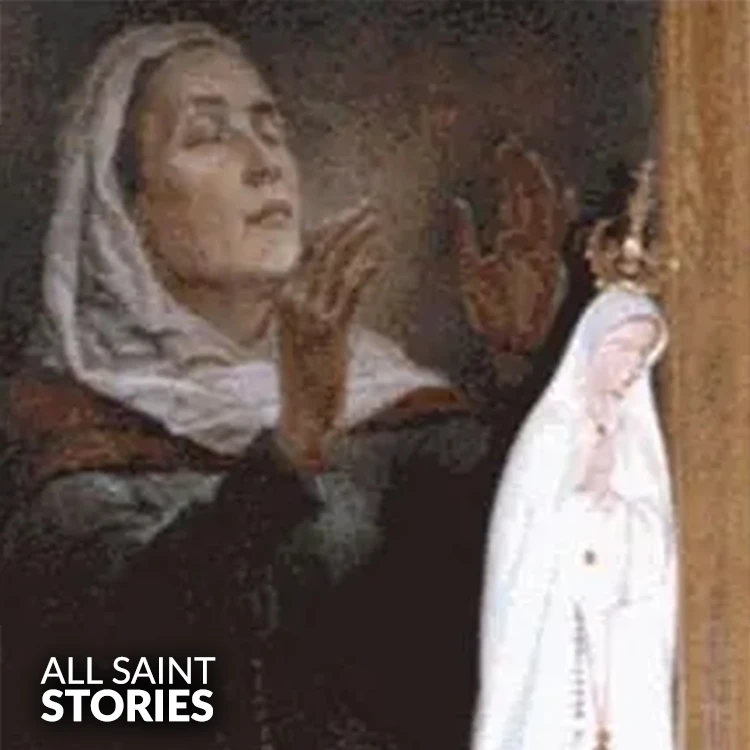St. Dorotha of Montau, you endured hardship with grace and turned your sufferings into a source of union with Christ. Teach us how to find holiness in daily life, to persevere in faith through trials, and to trust in God’s presence even in solitude. May we, like you, seek the face of Christ with hearts full of love and devotion. Amen.
ST. DOROTHA OF MONTAU
ST. DOROTHA OF MONTAU

St. Dorotha of Montau was a 14th-century Polish mystic and recluse known for her visions, extreme penance, and deep spiritual insight, ultimately becoming a symbol of mystical union with God.
Dorotha of Montau was born in 1347 in the small town of Montau, located in what was then the Teutonic State, now modern-day Poland. From an early age, she exhibited an intense spiritual hunger and a desire for holiness. Though she longed to enter religious life, her family arranged a marriage for her when she was about 16 years old to a swordsmith named Adalbrecht, a man known to be hot-tempered and domineering. Despite the hardships of this union, Dorotha bore nine children—eight of whom died young—and remained a faithful and patient wife, believing her sufferings were part of God's divine will.
Dorotha led a life of extraordinary piety even amid the challenges of marriage. She practiced penance rigorously, fasted frequently, and gave generously to the poor. Her home became a place of spiritual guidance and charity. She often attended Mass multiple times a day and undertook long pilgrimages to holy sites, including Aachen, Cologne, Rome, and even the Holy Land. Her devotion inspired others, but it also drew suspicion and criticism. Nevertheless, she remained steadfast in her spiritual convictions.
After her husband died in 1389, Dorotha made a dramatic decision: she became an anchoress, a form of religious recluse. She was enclosed in a small cell adjoining the Cathedral of Frauenburg (Frombork), where she lived the rest of her life in solitude, prayer, and contemplation. Her cell became a destination for pilgrims and seekers of spiritual advice, and Dorotha became known for her mystical visions of Christ, the Virgin Mary, and various saints. These visions were recorded by her confessor, Father Johannes of Marienwerder, who later compiled her biography and spiritual teachings.
Dorotha’s mysticism was marked by her profound love for Christ, her meditations on His Passion, and her desire to suffer for the salvation of souls. She often entered states of ecstasy and bore spiritual sufferings that many around her interpreted as acts of divine union. Though she was never formally part of a religious order, Dorotha lived as one fully consecrated to God, and her influence grew even after her death.
She died on June 25, 1394, in her cell at the cathedral. Her reputation for sanctity spread quickly, and many miracles were reported at her tomb. Despite the early push for her canonization, political and ecclesiastical disruptions delayed the process for centuries. However, she remained venerated locally and in parts of Central Europe. Finally, in 1976, Pope Paul VI officially canonized her, recognizing her life of profound holiness and spiritual depth.
Video Not Found
The information on this website is compiled from various trusted sources. While we aim for accuracy, some details may be incomplete or contain discrepancies.
If you notice any errors or have additional information about this saint, please use the form on the left to share your suggestions. Your input helps us improve and maintain reliable content for everyone.
All submissions are reviewed carefully, and your personal details will remain confidential. Thank you for contributing to the accuracy and value of this resource.
Credits & Acknowledgments
- Anudina Visudhar (Malayalam) – Life of Saints for Everyday
by Msgr. Thomas Moothedan, M.A., D.D. - Saint Companions for Each Day
by A. J. M. Mausolfe & J. K. Mausolfe - US Catholic (Faith in Real Life) – Informational articles
- Wikipedia – General reference content and images
- Anastpaul.com – Saint images and reflections
- Pravachaka Sabdam (Malayalam) – Saint-related content and insights
We sincerely thank these authors and platforms for their valuable contributions. If we have unintentionally missed any attribution, please notify us, and we will make the correction promptly.
If you have any suggestion about ST. DOROTHA OF MONTAU
Your suggestion will help improve the information about this saint. Your details will not be disclosed anywhere.
© 2025 Copyright @ www.allsaintstories.com





 English
English
 Italian
Italian
 French
French
 Spanish
Spanish
 Malayalam
Malayalam
 Russian
Russian
 Korean
Korean
 Sinhala
Sinhala
 Japanese
Japanese
 Arabic
Arabic
 Portuguese
Portuguese
 Bantu
Bantu
 Greek
Greek
 German
German
 Dutch
Dutch
 Filipino
Filipino